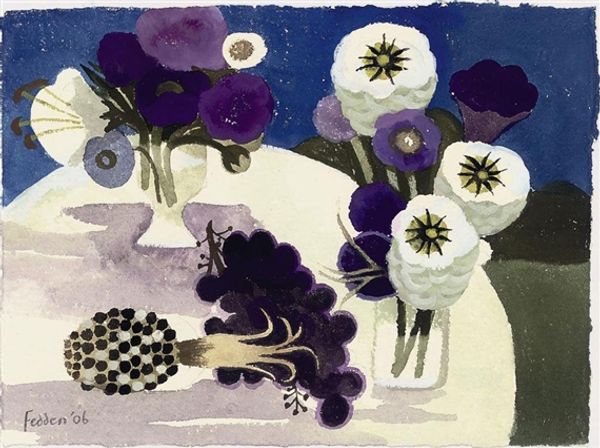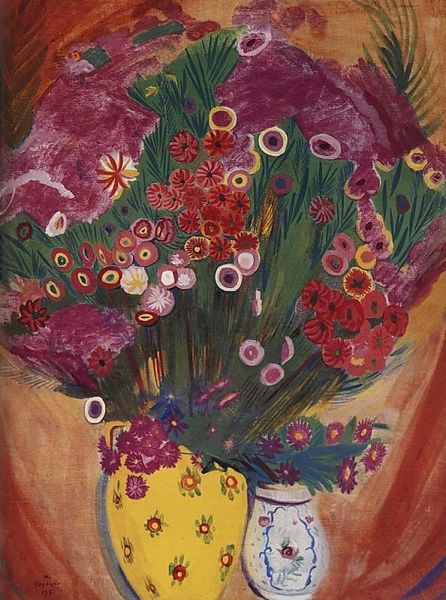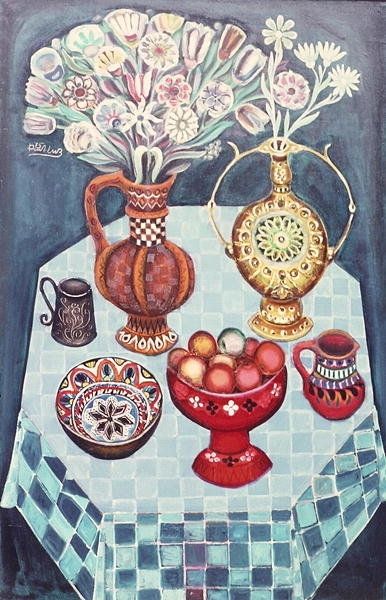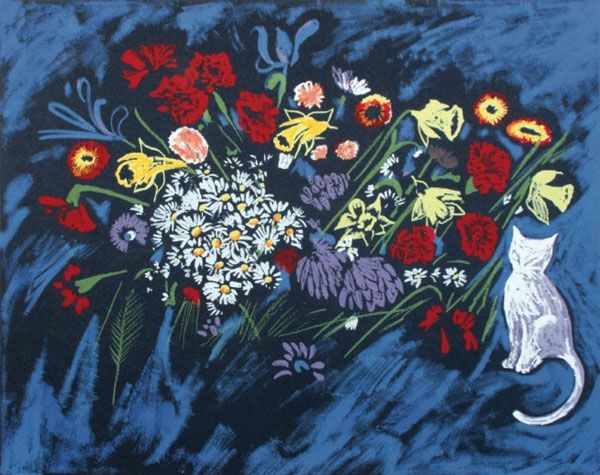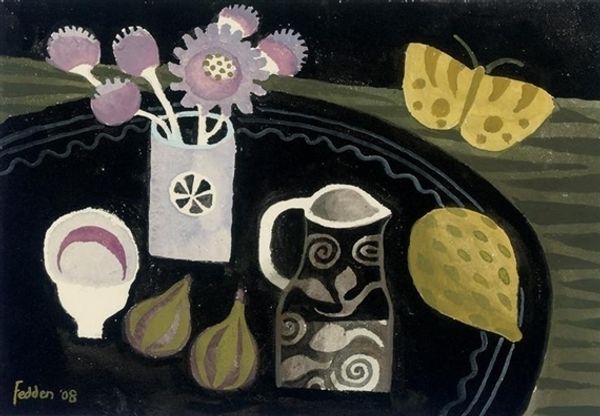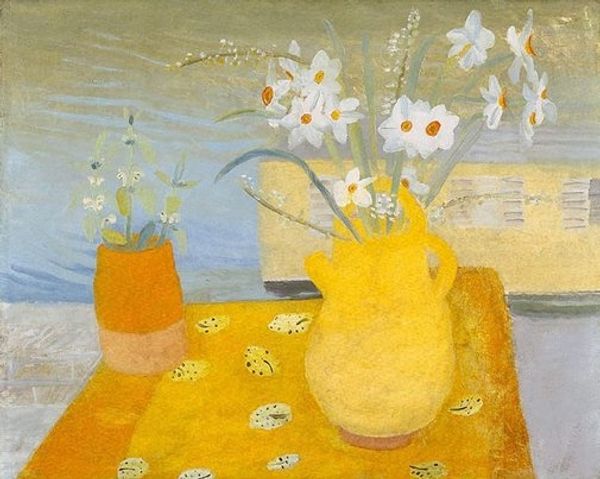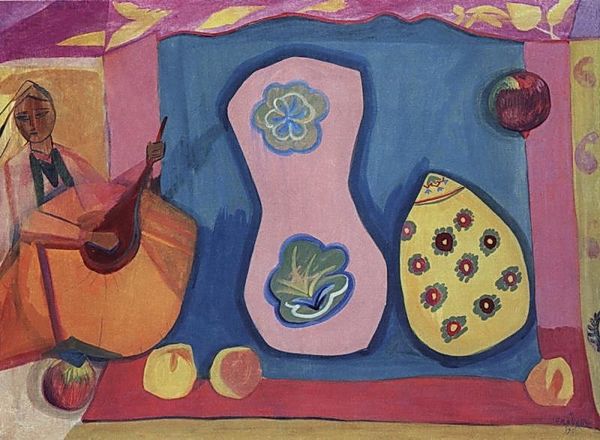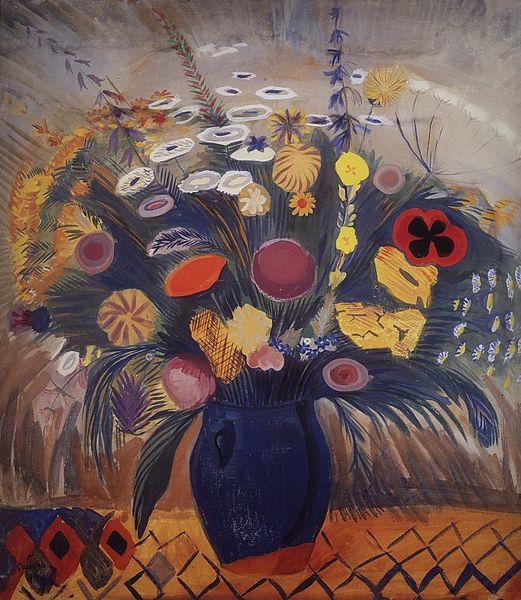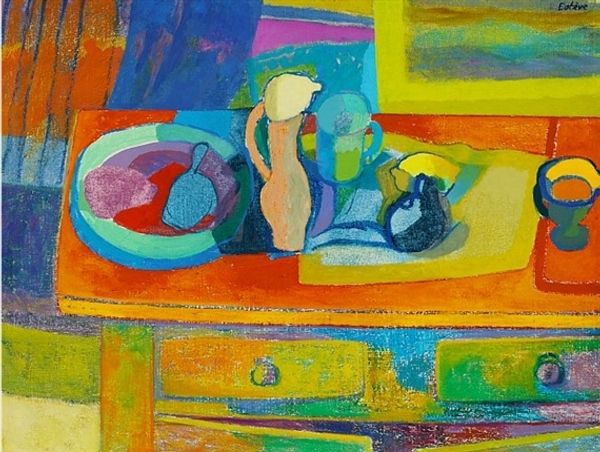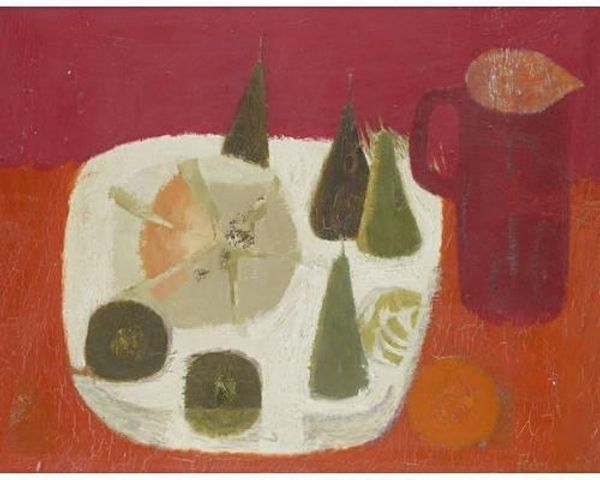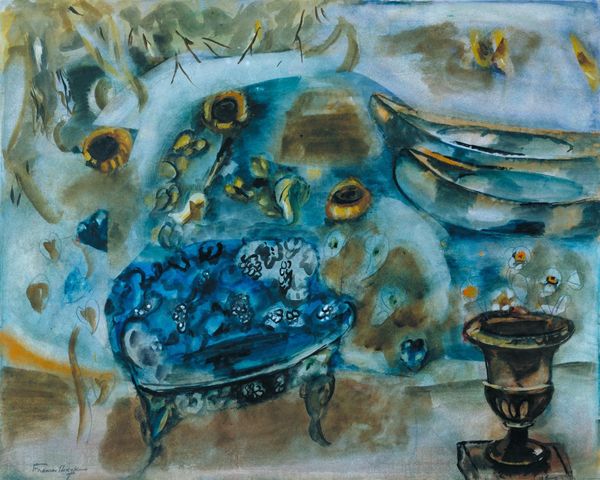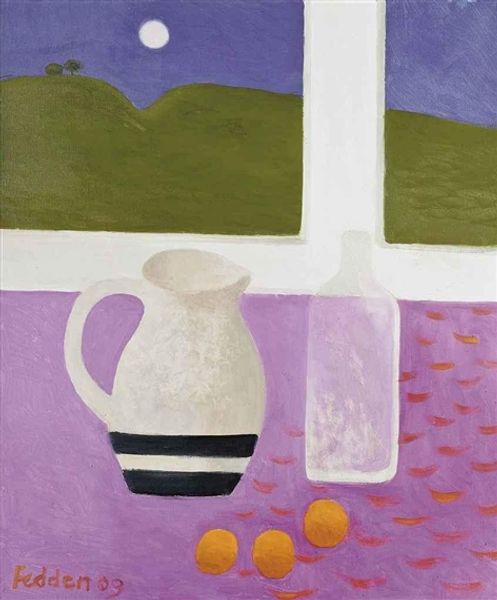
painting, acrylic-paint
#
painting
#
acrylic-paint
#
figuration
#
naive art
#
modernism
Copyright: Mary Fedden,Fair Use
Mary Fedden painted this still life called ‘The Oil Can’ in 1971. The namesake oil can, emblazoned with "Olio," sits alongside a tableau of carefully arranged objects, each laden with symbolic potential. Consider the chameleon. Ancient cultures, from the Greeks to the Egyptians, have long regarded it as a symbol of adaptability and change. Yet here, rendered in cool blues, it is a static emblem on a canvas, a captive of the artist's vision. Does this suggest a commentary on the nature of change itself – its potential for illusion or even stagnation? The grapes, a recurring motif throughout art history, often symbolize abundance and fertility, echoing motifs found in classical antiquity. This combination subtly evokes primal associations of transformation, nourishment, and the enduring cycles of life, death, and rebirth. Notice how the artist's arrangement transcends mere representation. Fedden captures a moment laden with latent meaning, a silent drama that engages our subconscious. This echoes the profound influence of cultural memory embedded within the symbols, creating a non-linear dialogue between the artwork and our collective understanding.
Comments
No comments
Be the first to comment and join the conversation on the ultimate creative platform.
